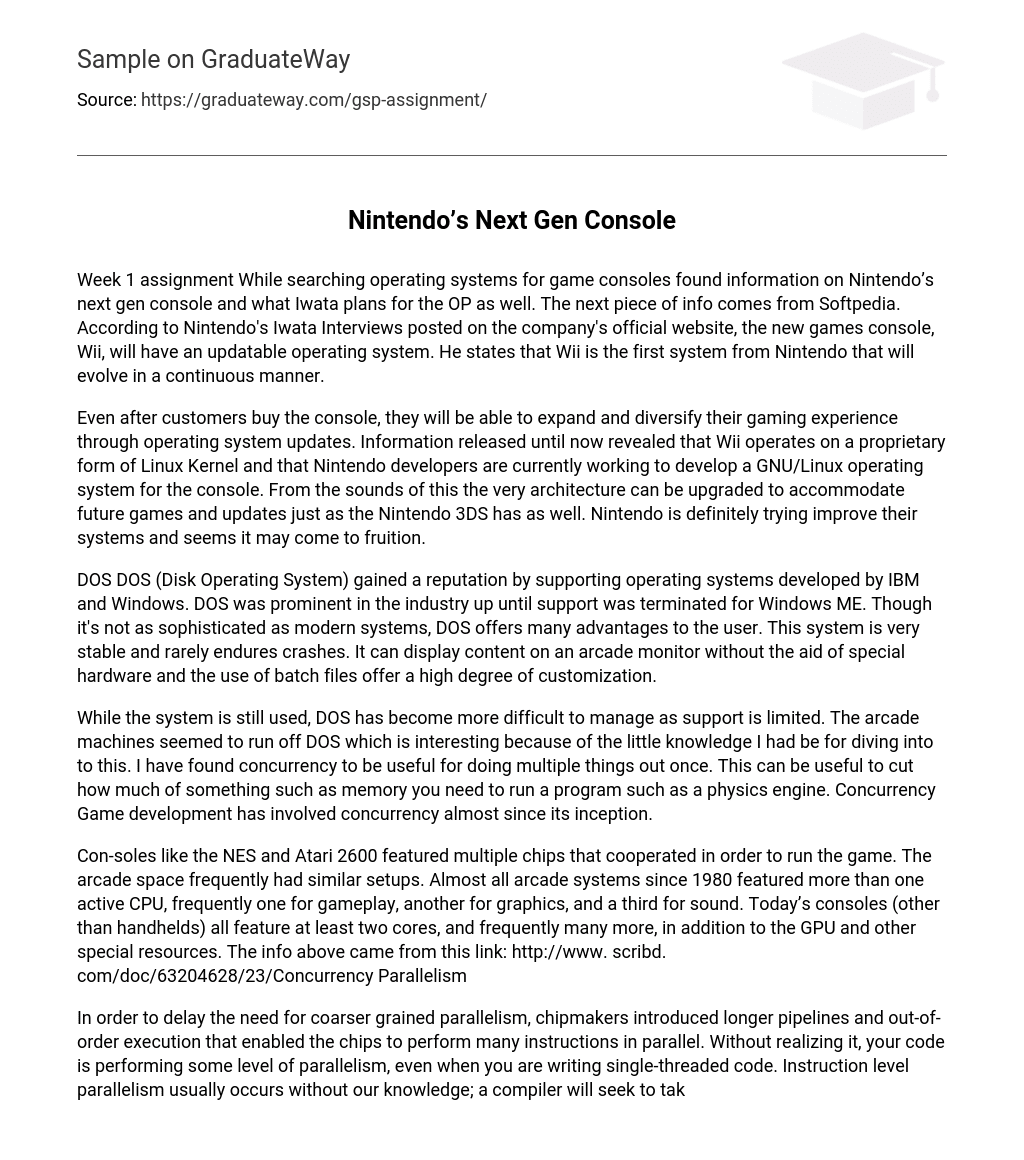Week 1 assignment While searching operating systems for game consoles found information on Nintendo’s next gen console and what Iwata plans for the OP as well. The next piece of info comes from Softpedia. According to Nintendo’s Iwata Interviews posted on the company’s official website, the new games console, Wii, will have an updatable operating system. He states that Wii is the first system from Nintendo that will evolve in a continuous manner.
Even after customers buy the console, they will be able to expand and diversify their gaming experience through operating system updates. Information released until now revealed that Wii operates on a proprietary form of Linux Kernel and that Nintendo developers are currently working to develop a GNU/Linux operating system for the console. From the sounds of this the very architecture can be upgraded to accommodate future games and updates just as the Nintendo 3DS has as well. Nintendo is definitely trying improve their systems and seems it may come to fruition.
DOS DOS (Disk Operating System) gained a reputation by supporting operating systems developed by IBM and Windows. DOS was prominent in the industry up until support was terminated for Windows ME. Though it’s not as sophisticated as modern systems, DOS offers many advantages to the user. This system is very stable and rarely endures crashes. It can display content on an arcade monitor without the aid of special hardware and the use of batch files offer a high degree of customization.
While the system is still used, DOS has become more difficult to manage as support is limited. The arcade machines seemed to run off DOS which is interesting because of the little knowledge I had be for diving into to this. I have found concurrency to be useful for doing multiple things out once. This can be useful to cut how much of something such as memory you need to run a program such as a physics engine. Concurrency Game development has involved concurrency almost since its inception.
Con-soles like the NES and Atari 2600 featured multiple chips that cooperated in order to run the game. The arcade space frequently had similar setups. Almost all arcade systems since 1980 featured more than one active CPU, frequently one for gameplay, another for graphics, and a third for sound. Today’s consoles (other than handhelds) all feature at least two cores, and frequently many more, in addition to the GPU and other special resources. The info above came from this link: http://www. scribd. com/doc/63204628/23/Concurrency Parallelism
In order to delay the need for coarser grained parallelism, chipmakers introduced longer pipelines and out-of-order execution that enabled the chips to perform many instructions in parallel. Without realizing it, your code is performing some level of parallelism, even when you are writing single-threaded code. Instruction level parallelism usually occurs without our knowledge; a compiler will seek to take advantage of this parallelism whenever possible. What I can take from all of this that these process to have anything game-to anti-virus programs to perform what they were made for.





